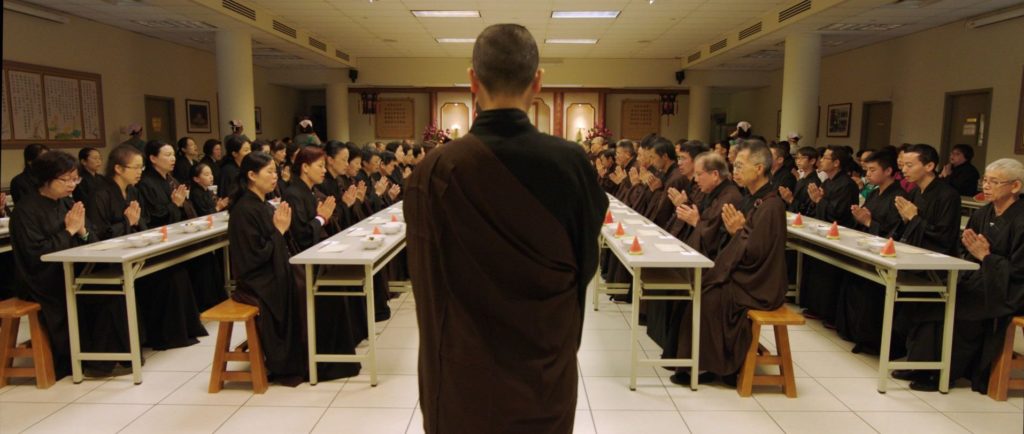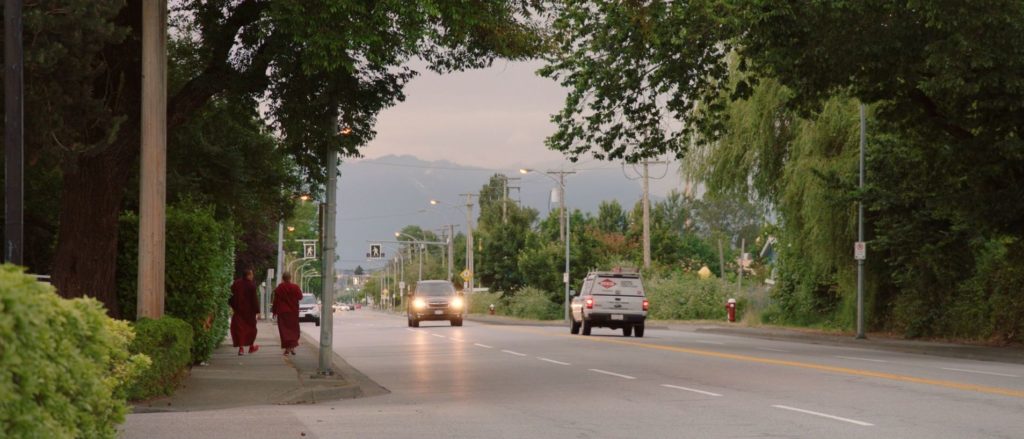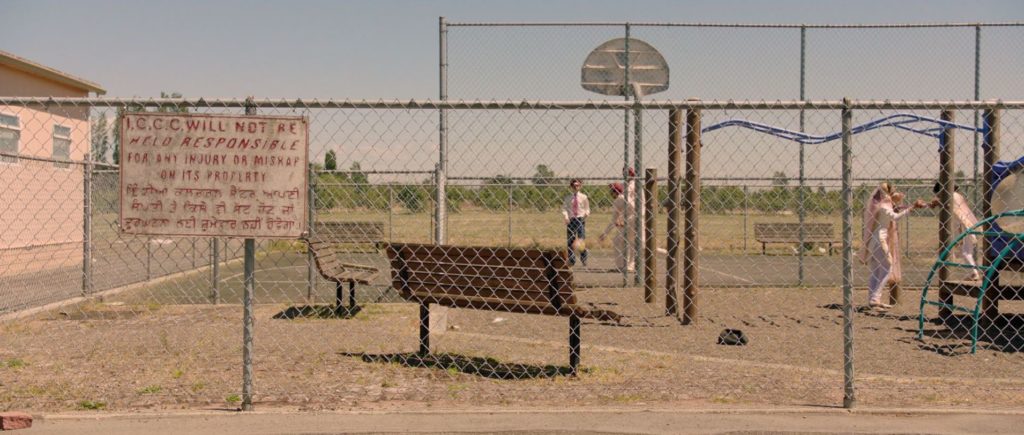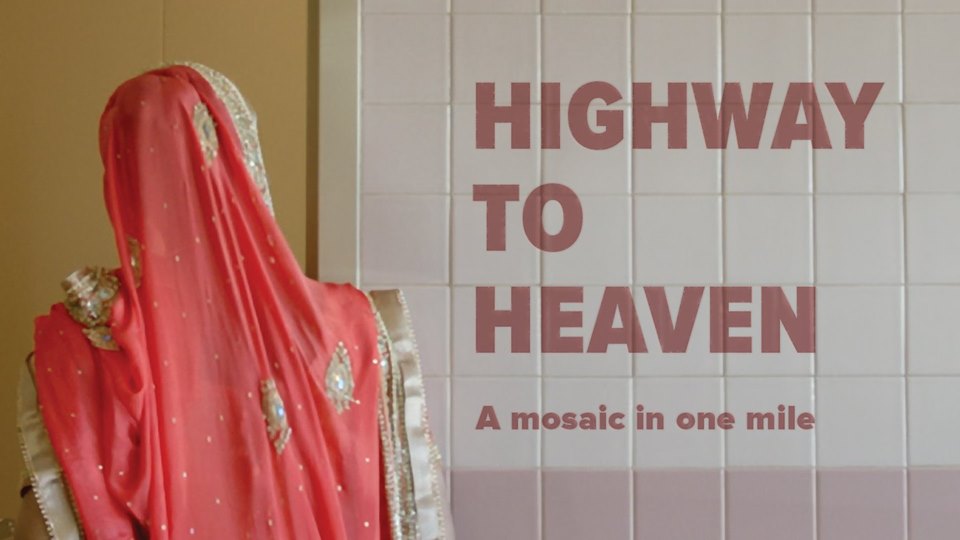Without risk there is no reward. When you apply this rule to filmmaking and it turns out to be a stellar, outside the box success, people will notice. I personally get tired of cookie cut, play it safe film format. I’m always relieved when someone decides to break the rules and make a film that is stylistic, original and can entertain.
Sandra Ignagni is a documentary filmmaker known for Ranger and now The Highway to Heaven. She doesn’t want to be pigeonholed or scripted. She is a Maverick choosing her own path to what she believes makes a good documentary. Fearless and tenacious, she has forged her films out of part art and part nature. Her latest documentary, Highway to Heaven has no scripted dialogue, nor does it have an instrumental soundtrack. She had some extremely talented people that helped her to make it her way, with her vision. The film is captivating with colourful imagery and the sound was designed completely organically; from traffic, wind and echoes of participants in the film. It’s a courageous piece that explores No. 5 Road in Richmond and its 20 buildings of worship that is as diverse as it gets.
I met up with Sandra at a coffee shop in Vancouver to discuss this extraordinary 17-minute film.
“How did the idea come about to make this film?
“On No.5 Road in Richmond, BC exists a place that is utterly unique in the world. On a very short stretch of suburban road there are more than 20 buildings of religious worship representing all of the worlds major religions. The first time I saw the highway (locals call it the Highway to Heaven), to me it looked like a potential documentary, simply because I’d never seen anything like it before. I started approaching each group individually, attending services and meeting religious leaders to see if there was interest in participating in this film and most were very interested. It’s been a 3-year-long process in which I’ve gotten to know each group represented in the film and worked with them to shape the overall content and feel of the film.”
Sandra continues, “The kinds of documentaries that I’m drawn to are very meditative and sensory in nature. In this film, there are no interviews, there is no narration or detailed dialogue on screen. It’s a more of a experiential film for the audience member.”
“Does that make it more difficult to form a story?”
“I would say that the film doesn’t really have a story per say. It has a subject and it also has structure. I was very fortunate to work with Milena Salazar to shape over 30 hours of footage into a 15-minute film that treats every location that we visit very accurately and respectfully, while giving a sense of the diversity found on that road without me having to intervene in the film to explain what’s happening. People watching the film for the first time might have a sense of disorientation for the first few minutes but by the end it becomes quite clear that we’re on a mile stretch of road that’s shared by these groups.”
“Have you made other documentaries using the same technique?”
“I have. My last film, Ranger is also a short documentary about a passenger ship and freight vessel that travels Canada’s Labrador’s coast-line and connects communities with no road access. I was drawn to the boat because it contained a curious convergence of cultures along the coastline. You have Innu, the Inuit, the settler population and a handful of tourists that chose to spend their summer vacation on this incredibly rocky boat in the North Atlantic. All of these things combined together create a beautiful space. The sound design was really key because the engines form the heartbeat of the boat acting as a lifeline for the region. Similarly with Highway to Heaven, the sound design is also critical because the road is always present. Even if you’re not seeing the road, you’re hearing it. When you’re inside any one of the buildings you can always hear the road, whether you’re in a school or at a wedding; it’s part of the auditory environment of No. 5 Road. My first few films did not use this technique, largely because they were student films. When you’re working in an institution, you have to follow the rules. However, the minute I was finished school, those rules went out the window. I’ve had success with these films largely because they come from the heart. I’m truly demonstrating how I see the world and hoping that audiences are receptive to it.”

“Does the road provide the narration in a sense?”
“In Ranger, the main character is the vessel and in The Highway to Heaven, the main character is the road.”
“In film school, they tell you that visual is as important as sound and if one of those elements are missing, it throws the viewer off. Is it fair to say that your film focuses on sound and imagery more because it is being told outside the realm of traditional film?”
“For me, I love a well-composed image and I worked many months with my director of photography, Andrew Coppin to convey my preferences. From this work, he had a very good sense of how the film should look. He did an excellent job on delivering that. I like a lot of static locked-off tripod images and, stylistically, I like to linger on an image, allowing the audience to absorb all of the details within it.”
“Did your DOP know that you wanted to make the documentary in this style before getting involved?”
“Yes, he had seen and studied Ranger, I had shared a number of my favourite films with him and we also did many site visits before bringing the cameras to the road. We used photography; he’d take pictures and we’d review them afterward to discuss them. He’s a very attentive DP. I’m extremely lucky to have worked with him.”
“Having a talented DP is priceless and once you find one you certainly want to hang onto them. I’ve heard that on many occasions.”
“Similarly with sound design, in the art that I make, image and sound have equal balance. My sound designer is Eva Madden. There’s no score in the film, but yet she was able to make music with all the diegetic sound we were able to capture on location. The film is extraordinarily musical and includes seven languages because there’s such incredible diversity on No. 5 Road. She was able to create flow from scene to scene that I like to refer to as visits. I’m bringing the audience on brief little visits to all of the different buildings and various landscapes surrounding No. 5 Road. She was able to weave the natural sound in a way that’s symphonic. It’s a real testament to her skill.”
“What is the biggest message you’re trying to convey through this film?”
“Unfortunately, we live in a world in which there has been violence towards religious groups. There’s xenophobia, there’s a lot of hatred. But No. 5 Road, although not a model for the world, and not perfect, day-to-day life on the road is relatively peaceful. People are capable of respecting their neighbours in a way that does offer lessons for the world. Being able to sit with something different from your own experience that you might not fully understand and is only partially visible is a skill that everyone needs to hone in order to create a better world.”

“Has the film premiered yet?”
“Its premiere is taking place at the Toronto International Film Festival and also screening at the Vancouver International Film Festival.”
“Are there any night images or are they all day shots?”
“The film is set during the course of a day, so it opens at 2:45 am, which is the first meditation of the day for the Lingyen Mountain temple. From there we weave in and out of the buildings during the course of the day before returning to Lingyen at night for their evening meditation.”
“Were you inspired from other filmmakers to use this technique in your films?”
“My inspirations are varied. I was very fortunate to receive a Canada Council Grant in 2018 to mentor with J.P. Sniadecki who is an anthropological filmmaker, and I was so fortunate to be able to do reading courses with him where we looked at place based documentary and cinema. A lot of documentaries that deal with the story, a particular character or social justice issue; I’m very much drawn to a place and the convergence of cultures within a particular place.”
“Considering this films weighs heavily on imagery, what type of camera did you use?”
“We used two Arri Alexa Minis.”
“What size crew did you use?”
“It really depended on the production day. There were some scenes/visits where it was myself, my DP Andrew and the sound recorder. There were other scenes that were more complicated that required a larger crew. On the days where the crew was larger it would’ve been because we’re in communities where we had people coordinating releases in multiple languages. For example, we were at a wedding with hundreds of people in attendance and had to ensure everyone was aware that we were making a documentary. That required a large number of production assistants, which caused quite a spike in crewmembers for certain days.”

“Since you ended up with 30 hours of footage, why did you only make the film 17 minutes long?”
“It was my original intention to make it a short. I believe shorts allow you to take creative risks. I’m also a new filmmaker and felt that I couldn’t see past a short film but now feel ready to take on a feature. I actually feel like there are a lot of features out there that could be shorts.”
“Was the film entirely financed through the National Film Board?”
“I felt extremely fortunate to have their support. Shirley Vercruysse was the executive producer and producer on the project as well as the Associate Producer, Teri Snelgrove, who is now a producer with the NFB. When you’re making a film with religious diversity, especially in the climate we live in it’s extremely important to have the trust and respect of the participants (leaders of the various organizations) in the film. When you bring in a new producer for the first time I did have some reservations/concerns about my relationship with the participants changing but to my surprise and delight Teri actually strengthened my relationship with the various organizations because she’s such an amazing and delightful human being. People can really sense that about her, so I was so lucky to have her on the project working with me. She was incredibly respectful and everyone loves Teri.”
“When you approached the participants and had explained that there’d be no dialogue, did it make it easier for permission?”
“Yes and no. I did show everyone Ranger because I thought it was very important that people understand that I’m not a documentary journalist but do consider myself to be a documentary artist. It was very important for people to understand the style of filmmaking that I use. To a certain extent it’s hard not to look at Ranger and not feel delighted by it because it really is a beautiful film. It helped in terms of building the trust but at the same time, each of the communities had their own message that doesn’t necessarily get told in this kind of film but I think that’s ok because there are other pieces that can address more political aspects of what’s happening on No. 5 Road.”
“How many of the buildings/places of worship did you approach to use in the film?”
“There are two Buddhist temples (Thrangu Tibetan Buddhist Monastery and the Lingyen Mountain Temple) in the film. There’s one Church, one Mosque, Az-Zahraa Islamic Centre, the Richmond Jewish Day School, the Vedic Centre, and the Sikh Gurdwara/India Cultural Centre that are also in the film. There are a number of secular/non faith groups that also appear in the film, such as Mylora Executive Golf Course, and at the end of No. 5 Road is the Richmond RCMP detachment, which police the road as well as promote cultural bridge-building work. One of the scenes in the film is of a number of officers refereeing a floor hockey game between the Jewish school and the Islamic school. These are examples of the communities working together.

